What do we mean when we say “hair transplant”?
By the term “hair transplant” we mean the autotransplantation of hair follicles, i.e. the transfer of hair follicles from the zone of permanent hair growth to the affected area. The zone of permanent hair growth is called the back and side part of the scalp, where the hair is not affected by hormonal processes. Therefore, the hair follicles taken from this area transfer their genetic information, i.e. permanence, to the (affected) area where they are transferred. The affected area is called the area that shows thinning and is usually located on the top of the scalp.
Two transplantation techniques are successfully performed worldwide: FUT and FUE, the main difference between which is the method of hair follicle extraction. In FUT, a single skin tissue is extracted and then the follicular units are separated, while in FUE, individual hair follicles are extracted.

“Every hair transplant requires a completely personalized plan that I am called upon to carry out individually for each person who trusts me.”
Hair transplantation is a cosmetic procedure, scientifically documented with literature since at least 1960. Having gone through many stages of development and successive research, we can now say with confidence that in the last decade hair transplantation is at its best: the results are completely natural, with extremely satisfactory density, while the procedure is performed with minimal pain and the healing period is faster than ever. This means that we can offer our patients the smiles they desire and the self-confidence they lack with science, certainty and safety.

Hair transplantation at the DocTor.Kor clinic
Hair transplantation is a procedure that few doctors, even fewer who are dermatologists, perform, and Dr. Torlidis-Kordera is in that precious minority. Although she is one of the oldest in the field – with 15 years of procedures under her belt – she continues to approach each case with the same enthusiasm and attention to detail.
The philosophy of the DocTor.Kor clinic is that each patient is different, having their own needs and requirements, each head has different characteristics and specifications. Thus, the treatment of each case is completely personalized.
Dr. Lia Torlidi-Kordera performs all stages of the procedure herself, having beside her an excellent team of anesthesiologists, nurses and assistants who contribute with their valuable help to the success of each operation.
For any questions you may have, you can book your appointment to discuss your unique case.
FREQUENTLY ASKED QUESTIONS

What is hair transplantation?
Hair transplantation is a medical procedure used to restore hair loss, in which hair is transferred from an area of the head or body where hair growth is dense (usually from the back of the head), to areas with thinning or complete hair loss.
The procedure is usually performed to treat male or female pattern baldness, but it can also be used for other cases, such as restoring eyebrows, beards, or even eyelashes.
Hair transplantation offers natural and long-lasting results, with the implanted hair continuing to grow normally. However, there are potential risks, such as scarring, infection, or unsatisfactory results, especially if an experienced surgeon is not chosen.
How is hair transplantation performed?
Hair transplantation is performed through specialized medical techniques, which involve transferring hair follicles from an area of the body with dense hair growth (usually the back of the head) to areas experiencing thinning or loss. The procedure is performed in stages and requires precision and expertise to achieve natural results.
After the procedure, the patient can return home the same day. Slight pain or swelling may occur for a few days. The transplanted hair will initially fall out after a few weeks (shock loss phenomenon), but will start to grow again after 3-4 months. The final result is usually visible within 12-17 months.
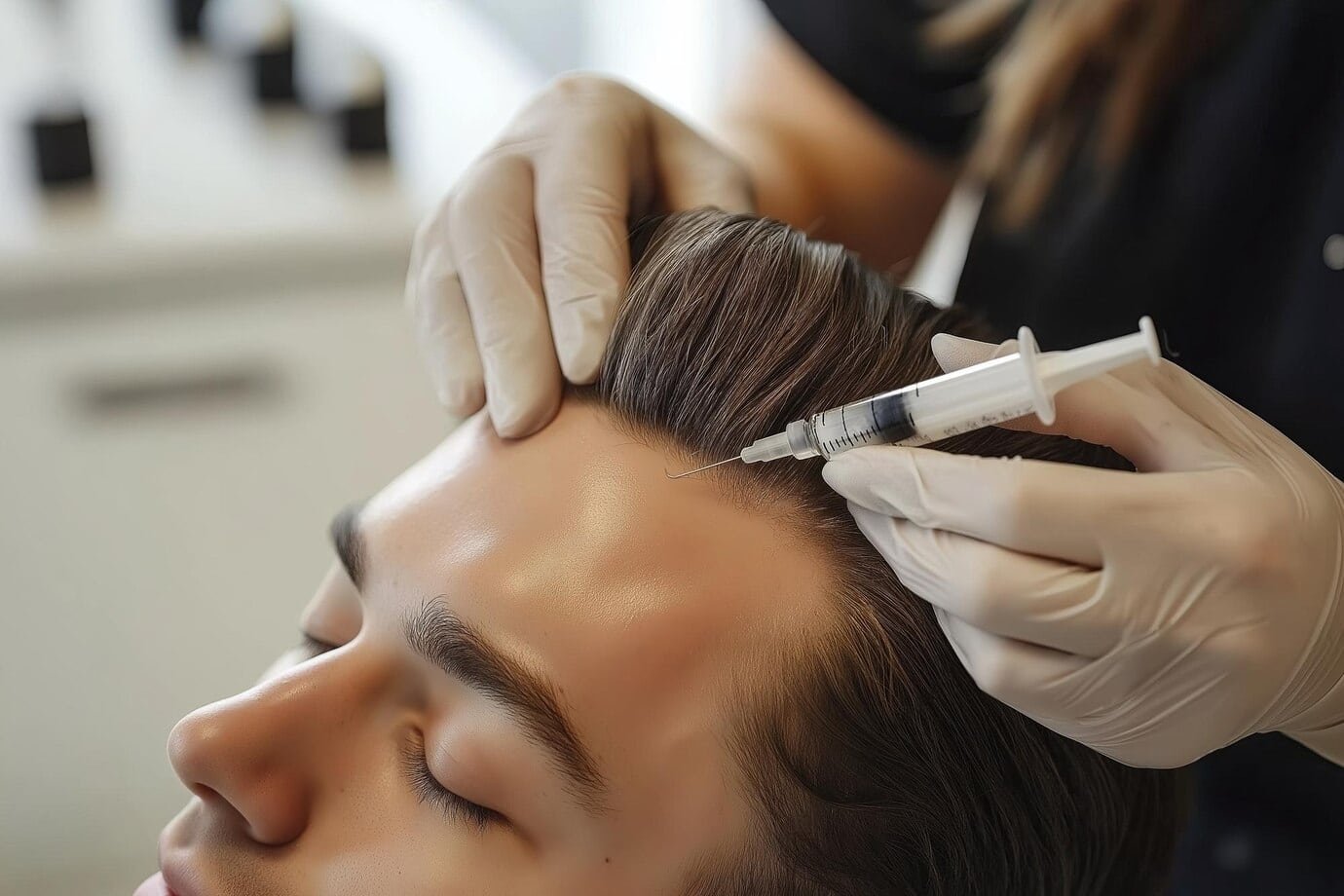
Hair Transplant – Step by step
Step 1
Hair transplantation begins with a careful evaluation by a specialist doctor. The first phase of the procedure involves examining the condition of the hair loss and studying the possibilities for hair restoration. The doctor checks the area with thinning and decides if the patient is a suitable candidate for the operation. The procedure is only performed if there are sufficient healthy hair follicles in the donor area, usually at the back of the head.
After the diagnosis is complete, the doctor develops the surgical plan, taking into account the patient’s wishes for the final result. The hairline is carefully designed so that the result looks natural and suits the patient’s face and age.
The procedure is planned in detail to achieve the best possible results. At this stage, attention is also paid to the patient’s health to ensure the safety of the procedure.
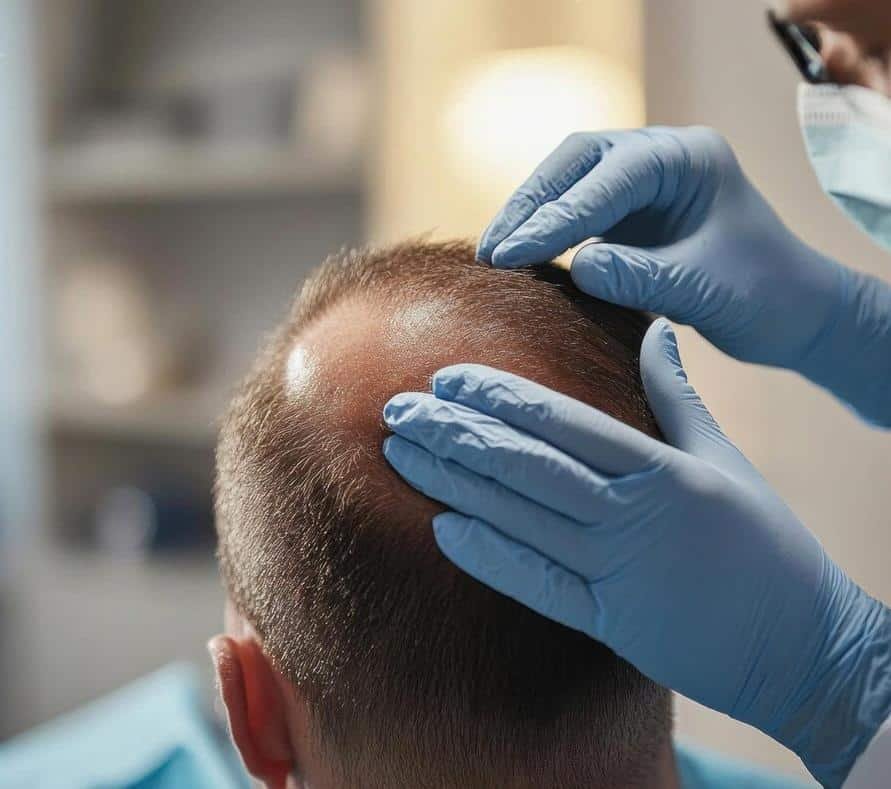
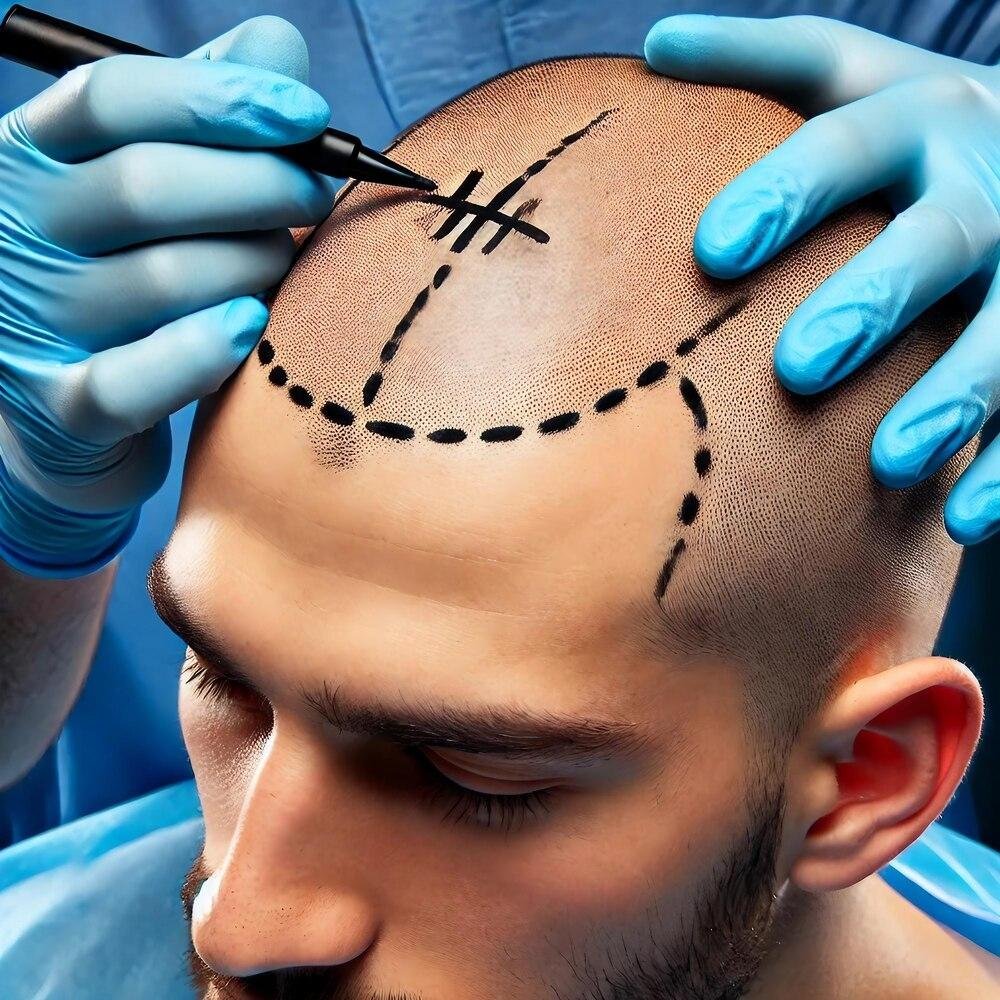
Step 2
The entire hair transplant is planned with priority given to proper management of the donor area, ensuring that no excessive hair follicles are removed, in order to maintain its natural density. This helps the area from which the hair originates remain dense and visually uniform after the procedure.
At the same time, the hair follicles are carefully distributed in the recipient area to achieve maximum coverage and density. Each hair follicle is strategically placed to cover sparse areas in a natural way, ensuring that the result will appear uniform and dense.
Particular attention is paid to the design of the hairline on the forehead. In this phase, an extensive discussion is held with the patient, taking into account their age, facial features, and symmetry.
Step 3
The next phase of hair transplantation involves extracting hair follicles from the donor area, usually the back of the head. This process is critical, as the hair follicles collected will be used to restore hair in areas that are thinning or balding.
Extraction can be performed using two basic methods: manual FUE and motorized FUE. In manual FUE, the surgeon removes the hair follicles by hand, using special tools, offering precise control but requiring more time. In contrast, motorized FUE uses electric tools that facilitate and speed up the process, allowing for faster and more accurate collection of hair follicles.
The total duration for hair follicle extraction ranges from 2 to 4 hours, depending on the number of hair follicles required and the technique used. During extraction, the hair follicles are placed in special conditions to maintain them in excellent condition until they are implanted in the recipient area.
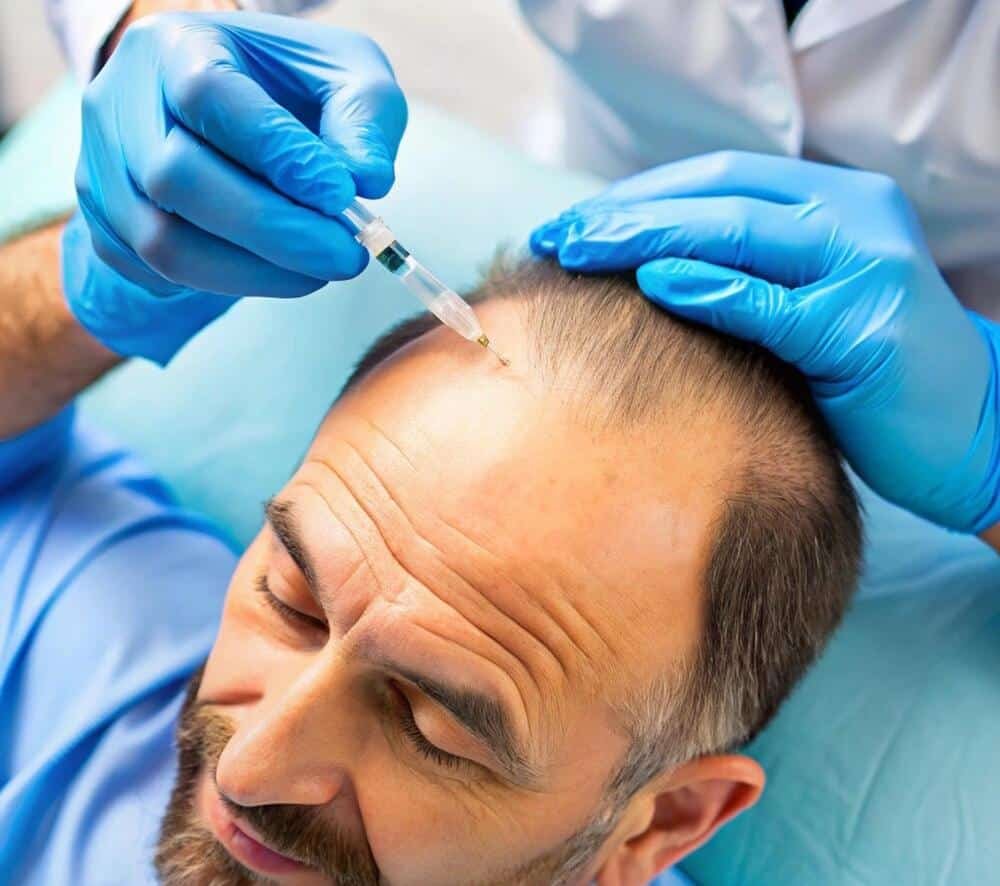
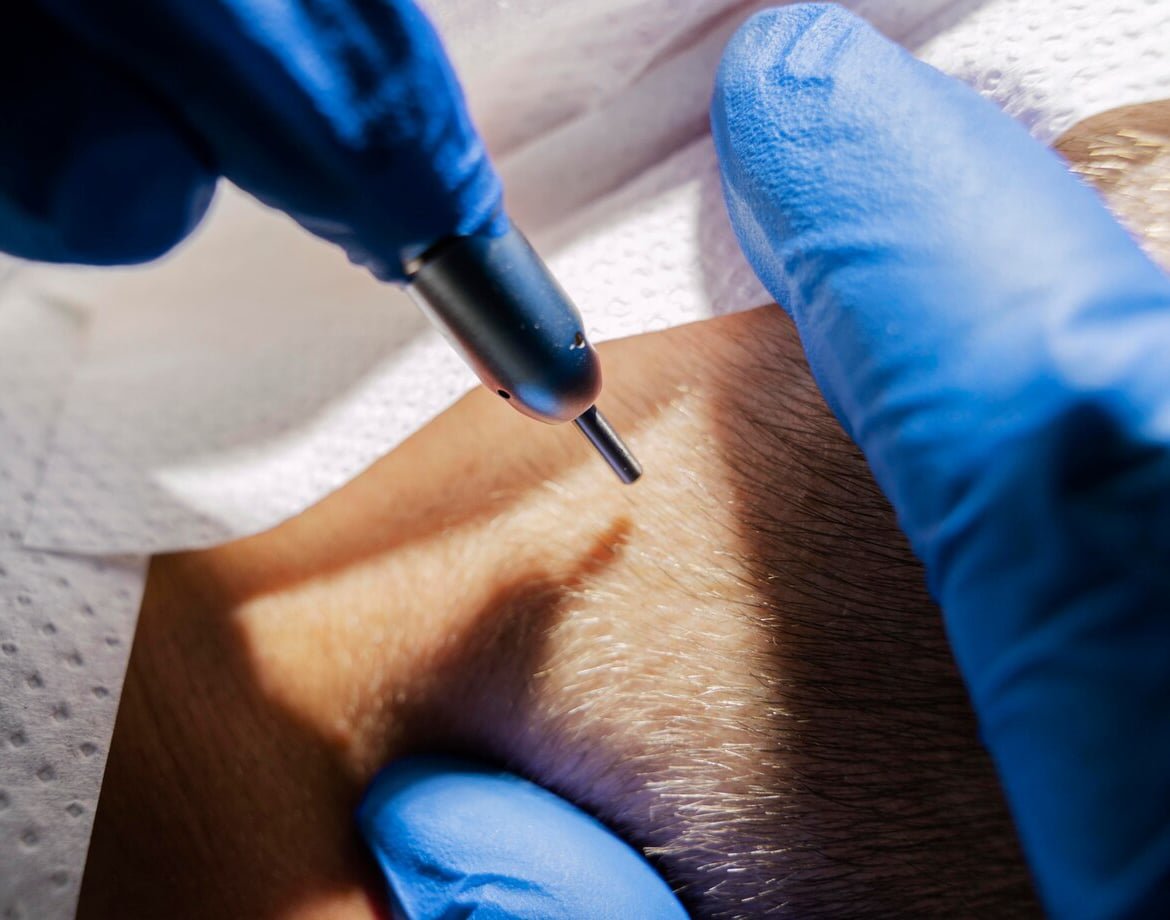
Step 4
After the hair follicles are extracted from the donor area, the hair follicles go into the processing and preservation stage. In this step, the hair follicles are separated and grouped based on the number of hairs they contain, such as single, double, or triple units.
Grouping hair follicles is critical for successful implantation, as it allows for their careful distribution in the areas that need restoration, ensuring uniform density and a natural appearance.
The hair follicles are kept under controlled temperature conditions and placed in a special solution containing strengthening ingredients. This solution is designed to maintain the viability of hair follicles and improve their chances of survival and regrowth after implantation.
Step 5
In this phase, the hair follicles that have been extracted are counted and recorded. This process ensures that all hair follicles are ready for the next phase of implantation with absolute precision.
The measurement is performed using a special software program, which allows for the detailed recording of each hair follicle. The software also calculates and records their category, such as single hair follicles (monofilamentous), bifilamentous, trifilamentous or tetrafilamentous.
By using the software, the exact quantity of hair follicles to be used in the implantation is ensured, allowing for better preparation for the final phase of the procedure.
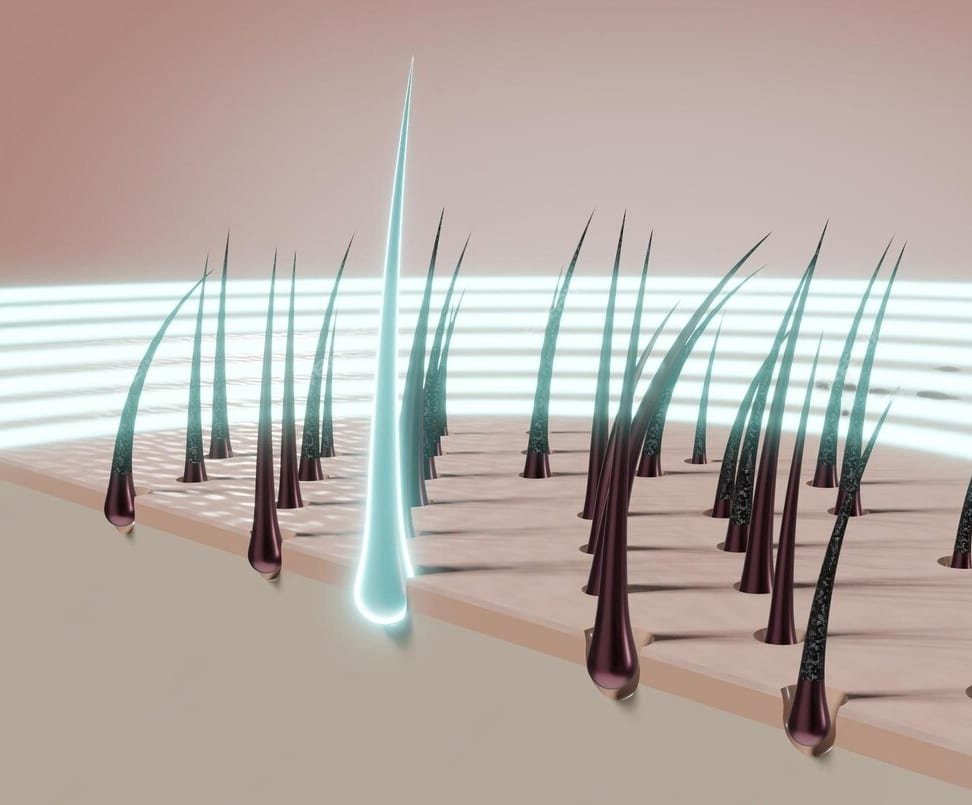
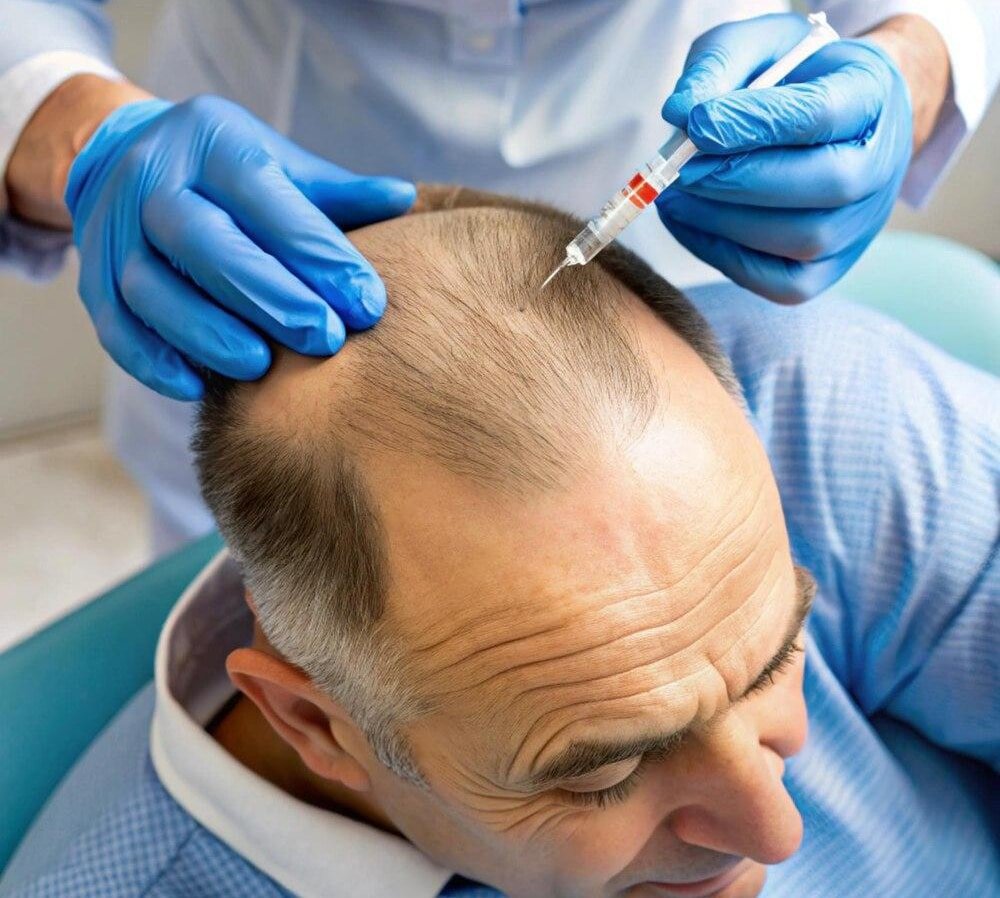
Step 6
In the final step of the hair transplant process, the hair follicles are implanted in the areas of thinning. This phase is crucial for achieving a natural and dense result.
The implantation process takes approximately 4 hours. During this phase, the hair follicles are carefully placed in the planned areas, following the design developed in the previous stage.
Upon completion of the transplant, the donor area is washed to remove any debris and prepare for the healing process. Instructions are also provided for caring for the area during the initial recovery phase. Finally, the next appointment is scheduled for the next day for additional washing and re-checking of the area, to ensure good progress of recovery and the correct development of the procedure.























